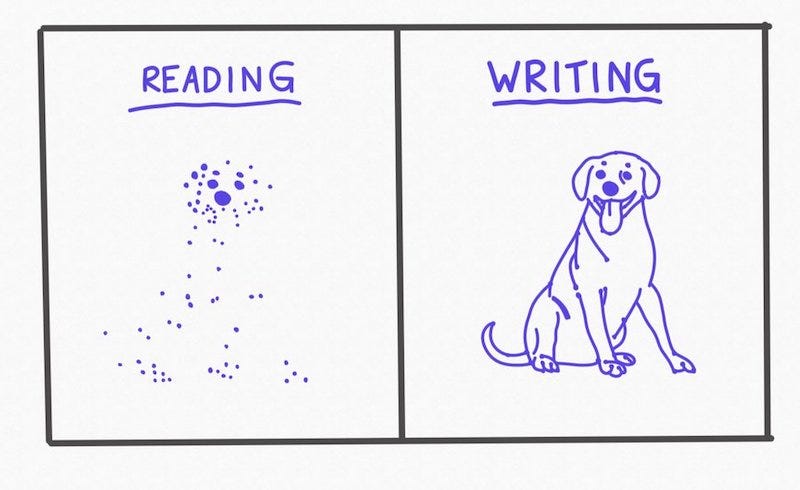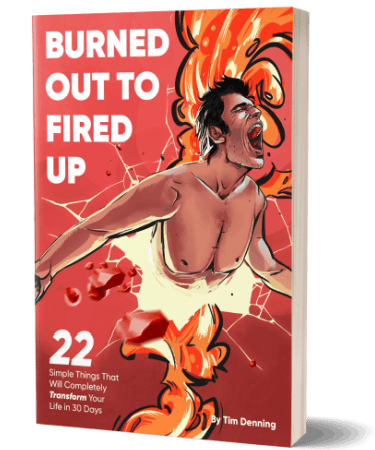Writer’s block is a dirty little secret.
Most writers never admit it. I’ve encountered it a few times in the last few months. When I analyze what has happened it comes down to the following:
- Feeling like any ideas I have are terrible.
- Overthinking everything.
- Not enough research.
Out of three, the third cause is the one I least expected to be a problem. Then a chat with fellow writer Todd Brison explained everything.
What most writers do
I am what Todd calls a cowboy writer. I write on the fly and don’t pre-prepare anything. I wear my cowboy pants proudly and rely on instinct.
Here’s what it looks like: I sit down to write for two full days per with nothing but a few badly written headlines in my ideas folder. Then I madly scramble around google like an out of control crash test dummy, looking for ideas to complement the headline, find evidence to back up the main points, source decent stories, and discover legitimate research to add in.
It’s a nightmare. All this research and googling kills my writing time.
Let me give you a clear example of why this is bad. If I watch a movie tonight about the life of Aretha Franklin, I’ll write down 2-3 sentences, mention it once in the next 7 days in an article, and then never think of or talk about that movie ever again. I’ve repeated that process for the last seven years.
Don’t you think that is bloody ridiculous, mate?
Of course it is. It’s insanity. I’m not alone. I’ve spoken to many writers in the communities I’m a part of that all do the same.
The huge problem
When you live life like a cowboy or cowgirl writer, all of your consumption becomes individual pieces of nothing.
You miss out on joining the dots between ideas.

To be able to join the dots you need a solid place to store ideas, jot down notes wherever you are, and synthesize what you’ve consumed.
Most of us use something like Apple Notes. It’s a disaster. Apple notes organises things the same way society does: with a hierarchy. When I search for notes via a keyword I get a word soup back as a result. It feels like I’ve been out on the piss the whole night and forgot where I put my keys when I open my notes app. As a result my notes get inputed and forgotten, instantly.
There’s a new way for writers to join the dots.
This app changed my life
It’s called Roam Research. It’s a note-taking app that us writers can use without any hierarchy. The structure is the same as the internet. There are links and backlinks on every note that you create. These act as the glue between ideas.
The real magic is the “unlinked references.” These are the suggestions made by Roam’s AI that put forward ideas to you that might be linked to the one you’re looking for.
No more decision fatigue
Traditional note-taking apps cause decision fatigue. You have to decide how to organize your notes and what folders things belong in. Some things belong in multiple folders so you have conflicts.
No more duplication
There is a huge amount of duplication in my notes. If the same quote applies to multiple notes then I end up with it copy and pasted in multiple places. Not with Roam. Roam has reference blocks. Essentially you can write the quote down once in Roam and then reference it on many different notes.
You get a handy number counter next to the original quote that tells you how many times you’ve used it and where. Because I can see the original note, I can see the context of what happened when that note was taken. This adds little details that make the quote more interesting when I share it. Why?
It’s the little details as writers that our readers care about. Imagine having the context for every note you’ve ever taken?
I hate journals. Now I love them.
I’ve always hated journalling. I’ve trashed it like a badass many times. Then Roam entered my life and moved into the spare bedroom. The context of a note, that I mentioned before, comes from the “daily notes function.”
The Roam apps automatically creates a brand new note every day with the day’s date. You can’t switch it off. I use this daily note to write down anything I observe or consume. There’s no organization. It’s all random.
Everything is linked, though, in Roam. So these random notes surround the more permanent notes that I want to use in my writing. The result is powerful context rather than an ordinary note taken in obscurity.
The magic of Roam Research isn’t obvious at first
Roam is your personal database. It takes time for it to work, though. Roam is only as good as what you put in it. In the first week it’s pretty pointless. The longer you use Roam the bigger the database becomes, therefore, the more potential there is for ideas to fall in love, have idea babies, and connect to each other in a rage of lust.
I have become obsessed. I can’t stop recording thoughts that I have.
You link your thoughts in Roam with hashtags. A hashtag is a topic. When you put loose topics around every thought, you arm yourself with a weapon you can deploy on your writing days. If I want to write a self-help article then I simply bring up Roam and look under the self-help hashtag. BAM!
All the thoughts I need are there. Then I can filter them down further based on additional hashtags I may have added. As I look at my notes the web starts to untangle. Other notes start to weave their way in — because that’s how Roam works.
Roam gives you connected thoughts. This is only spell-binding once you’ve experienced it.

How Roam Research nukes writer’s block
Good research and stories make writing easier. Roam creates a proactive library of everything you need when you sit down to write.
What I do is come up with headlines on days when I’m not writing. Then I add a few references to the headline from my Roam database that act as potential points or subheadings in the article. On my writing days all I need to do is write the intro, write the conclusion, and flesh out the pre-chosen points.
Pro tip
If you write down what you consume in your own words beforehand, you can simply copy and paste entire notes into the body of your article. This saves a lot of time.
It’s all about timing and energy
Before Roam I had zero confidence in my notes. So I wouldn’t use them and would try to wing it on my two writing days per week. Disaster.
It all changed when I found that the best time to write about something is when or straight after it has happened. That’s when the idea has the most energy. Roam gives me the confidence that if I spend the time to take a detailed note in the moment, then I’ll be able to:
- Find the note again.
- Ensure that note has value.
- Understand the context.
- Relive the high energy of the thought.
Takeaway
Remove hierarchy from your thoughts. Let the sorting of your writing ideas become automatic and intuitive with Roam’s design. Roam is so simple to use a 5th grader can figure it out in an hour.
Once you’re able to join the dots together of what you consume, your writing life undergoes an enormous overhaul. You become like a new writer.
Connected thoughts destroy procrastination forever. How? Roam.


